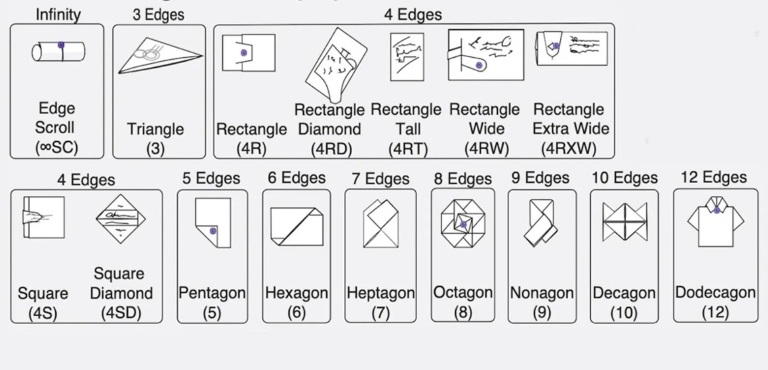
Letter locking. COURTESY
Hundreds of years ago, people developed ingenious methods to secure their letters from prying eyes and they did it with only paper, adhesive and folds
Late at night on 8 February 1587, an imprisoned Mary Queen of Scots composed her last ever letter to her brother-in-law. “Tonight, after dinner, I have been advised of my sentence: I am to be executed like a criminal at eight in the morning,” she wrote. “The Catholic faith and the assertion of my God-given right to the English crown are the two issues on which I am condemned.” With a sad acceptance of her fate, she asked him to take care of her affairs and pay her servants, wishing him “good health and a long and happy life”. After Mary had finished writing, she then began to fold up the letter to secure its contents. She didn't want her captors snooping – and particularly not her cousin Queen Elizabeth I. However, envelopes were not used in the 1500s – not least because paper was expensive – and there was no trustworthy postal service at the time. Instead, Mary cut a thin strip from the paper margin, before folding up her message into a small rectangle. After poking the knife through the rectangle to make a hole, she then fed the strip through, looping it and tightening it a few times, creating a “spiral lock”. No wax or adhesive was required, but crucially, if someone tried to sneak a look, they would have to rip through the strip, so her brother-in-law would know the message had been intercepted.
Mary Queen of Scots was far from the only person who was skilled in the art of “letterlocking” – the technique became common throughout Europe during the Late Middle Ages (1250-1500) and Early Modern periods (1500-1815). By folding and cutting letters in various clever patterns, people attempted to hide their correspondence from unwanted readers, and the “locks” came in myriad types. “This isn't something special that people do on special occasions. This is how you send a letter before the envelope is invented,” explains Daniel Starza Smith, a lecturer in Early Modern English literature at King’s College London. “So, if it's a business letter, if it's a love letter, if it's a spy letter, if it's a diplomatic letter, they're all using letterlocking. So it's not something confined to experts, royalty or spy masters. Anyone who is capable of sending a letter is using letterlocking.” But in the present day, we're only beginning to understand the technique's importance in history. In recent years, a whole taxonomy of apparently forgotten letterlocking tricks have been uncovered.






0 Comments